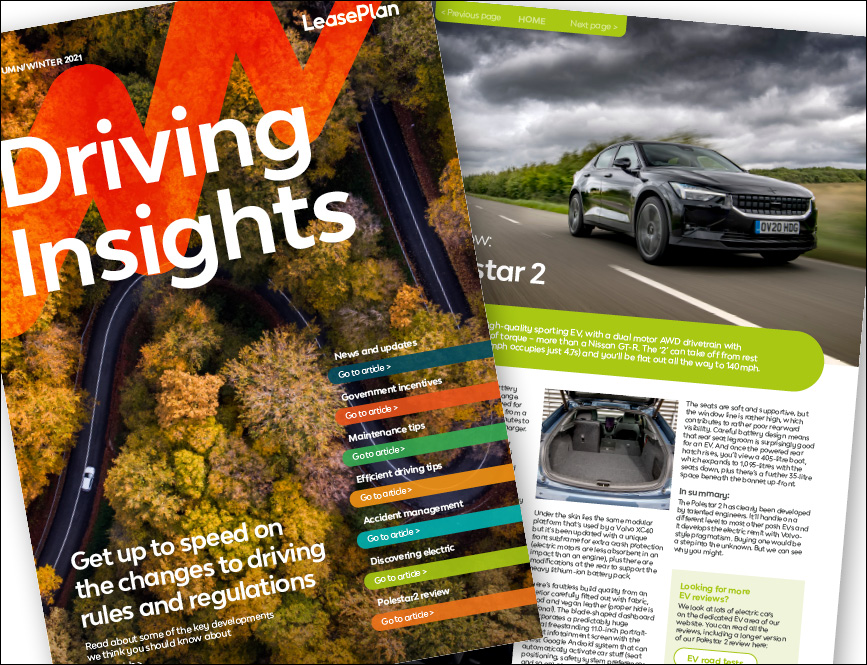Younger listeners would be forgiven if they chose to ignore the ten holy texts in this Spotify list of open road guitar solos. Most of them will be too young to drive, and will not yet have known the powerful feelings of freedom and frustration that intimate association with an automobile brings. They are also too busy fussing over the grooming secrets of John Grant’s beard, or trying to remix Kraftwerk on their iPads, to have paid much attention the work of Messrs Mercury, Henley and Van Zandt.
It is no surprise that the rock output of the 70’s and 80’s provides such a satisfying soundtrack to the driver. While dance music sounds like a malfunctioning starter motor, the best rock music perfectly mirrors the feeling of getting onto a dual carriageway after waiting for ages at the lights. Freedom, power, possibility!
It is no coincidence that classic driving rock songs all contain guitar solos. The guitar solo is a moment of pure music, when the song leaves the pedestrian realm of half-baked lyrics and simple chord structures and steps into a magical world where inarticulate feelings are harnessed to universal mathematical truths to create fleeting supernatural statements.
In his self-improving video series, the Wolf of Wall St, Jordan Belfort, identifies the four keys to being an enormous success in banking – I can’t remember them verbatim, but I think they were something like: talk fast, stare at people, smell of salt spray, and wear clean underwear.
Similarly, there are four things you must do if you wish to create the classic solo. They are, in order of importance:
1) Get a good tone. They say that a guitarist’s tone is in his fingers. Well, yes, up to a point. But really it’s in the guitar and the amp. Nearly all these solos were played on a guitar plugged directly into a valve (tube, in the US) amp that had been turned up to the limit. Beyond that none of those little effects boxes you see guitarists jumping about on were used to enhance the sound.
2) Have a good melody. If you can hum it and remember it, so much the better.
3) Make sure the music behind it kicks ass. A great solo can sometimes be just a nice noodle over a storming backing track.
4) Don’t bother unless it’s a great song. This is the most important point. If it ain’t a hit, no one’s ever going to hear it.
Sweet Home Alabama – Lynyrd Skynyrd (Ed King – soloist)
Ed King knew the song intimately before going into the studio and he had planned exactly what he was going to play before they pressed record. He plugged his ropey 1972 Fender Stratocaster into a 50 Watt Marshall amp and laid down the solo in two sections. In his epic memoir, Backstage Passes and Backstabbing Bastards, the producer, Al Kooper, recalls arguing with King about whether the song was in G or D (it’s in G major, or D Mixolydian, if you prefer). It doesn’t matter. The first solo is a tastefully articulated exercise in pinch harmonics that develops from the song’s superlative opening riff. The second solo spreads its wings, as the other musicians lift off behind it. It is a collection of delightful hammer-ons and country bends that rise to an awesome climax of sustained high notes raised up by an ecstatic female backing vocal section. There is no cleaner solo in rock.
Samba Pa Ti – Santana (Carlos Santana)
Translated as Samba For You, this whole song is a guitar solo. A lovely rolling wordless melody which was dreamed in its entirety (so he says) by Carlos Santana one hot night in 1969. A shade under five minutes long, it is never boring and develops beautifully as it straddles a rumba and then a double-time son montuno section. It represents the apotheosis of sound of the single coil P90 pickup mounted on a lightweight Gibson SG Special, plugged into the super loud, super clean, Fender Twin amplifier (the remarkable guitar and pickup combination which is also the sound of the Rolling Stones’ Brown Sugar and The Who’s Live At Leeds). What a rich, golden tone he produces. How effortlessly he blends the melodic sensibility of his early violin training with his love of blues bends, and what a fine Latin setting his band provides – lilting congas and shimmying shakers.
Stairway to Heaven – Led Zeppelin (Jimmy Page)
Zep’s best and, at the same time, most neglected song. Probably because it’s not about John Bonham’s drumming (which is fab here), or Jimmy Page’s guitar playing (at its most brilliantly structured and controlled), but because it’s simply a fantastic song that shines with Robert Plant’s barmy Edwardian fantasy imagery and Narnia vocals. The opening sounds like a grade one classical guitar piece. The solo is not, as you might expect, the climax of the song – that comes in the aggressive rocky section that follows (later borrowed by David Bowie for the middle of Ziggy Stardust). In the solo, Jimmy Page takes his 1959 Fender Telecaster through a series of country slides, rising to a call-and-response section with some ethereal harmonised guitar overdubs, into one of the greatest high widdles on record, before Plant comes in “And as we wind on down the road…”. There is some tape delay on the sound but otherwise it is just a guitar with a weedy single coil pickup into a valve amp, probably a Supro or a Marshall.
Don’t Stop Me Now – Queen (Brian May)
Queen-haters seem such a perverse breed. What’s not to like about this colourful, playful and superbly musical group? All four in the band were great in their own way, but two stand out. Freddy Mercury, who refused to bow to prog orthodoxy and flashed his inner Donald Swann with pride, and Brian May, who showed how melodic solo-ing could be done with volume and panache. They often fought and Don’t Stop Me Now can be read as Freddie Mercury saying, “You can’t play on this song, Brian!” and May saying, “What about if I do this?” and ripping off an absolutely corking solo. And Freddy saying, “OK, we’ll leave that in, but stop it when I come back in at the end”. Played on Brian’s homemade two octave Stratocaster copy through an early 60s Vox AC30 amplifier, it is a series of yearning legato phrases that climb towards Freddy’s vocal bridge and then ring in one final bell-like chord before fading away, leaving just the piano trio to motor off into the sunset.
Beat It – Michael Jackson (Eddie Van Halen)
The opposite of Carlos Santana’s uninterrupted stream of consciousness, this solo is a craftily assembled series of takes. This befits a song that was forged at the height of a commercial project to turn Michael Jackson into an all-penetrating capitalist pop machine. The fact that everyone on board – the producer, Quincy Jones, the backing musicians, Toto, and Jacko himself – were at the top of their game means that it’s also top class. Eddie plays a guitar of his own construction with a single wax-dipped hum-cancelling pickup (really two pickups side by side which reject background hum and have a characteristic warm mid-range sound). He plugged it into a artlessly modified Marshall 100 watt amplifier and turned everything up. It showcases the full range of Eddie’s breathtaking technique. In order: a tremolo dive bomb, followed by an octave right hand tap, two baroque tapping figures with a screaming harmonic tremolo pull, some more tapping leading into the high mandolin trills that introduce the final chorus. You can hear the same things in Van Halen’s Jump or Eruption, just as beautifully expressed, but Beat It is remarkable because it is the only time a guitarist guests on another artist’s record and his musical personality remains intact.
Crossroads – Cream (Eric Clapton)
Ironically, for a song about a location, Eric rather loses his way on this, but this is what gives this solo its surprising, jazz timed magic. There are other versions from same era which plod along quite happily in an overdriven bluesy vein, but in this one all the phrases link together in pleasing unexpected ways. He plays a Gibson ES335, with both neck and bridge humbuckers engaged (four pickups in all) into a loud Marshall amp. Lots of the ambience of the Fillmore auditorium, where it was recorded, bleeds onto the record. Satisfying seat-of-the-pants stuff.
Steely Dan – Kid Charlemagne (Larry Carlton)
The Gibson ES335 (see Crossroads above) is a semi-hollow guitar with a big fat, but stinging, tone that was thought by Larry Carlton, the session player on this song, to be the most versatile guitar for the various pop songs, jingles and light jazzy performances that he had to expedite during his day job in the LA studios of the 70s. In the first solo (played through an early tweed covered Fender Princeton amp) he marshals all his experience to blend country bends, jazz chromaticism, guitar tricks (a right hand octave tap, see Beat It above) to create a Rosetta Stone of cleanly picked tasteful note selection. The second solo, which takes us home into the fade is a more conventional eyes shut, wind-in-your-hair (although harmonically impeccable) rock bend-fest. The song itself is a masterpiece of Steely Dan’s most excellent middle period – they hadn’t entirely jettisoned their easy West Coast country feeling nor had they entirely gone up their own robotically constrained jazz arses.
Axis: Bold as love – The Jimi Hendrix Experience (Noel Redding, just kidding, JH himself)
Breaking news – yes, Jimi was an amazing accompanist, the best. From a sound perspective, a tone point of view, rhythmically, in every way, he showed how the guitar could be used to fill out a song and define its mood. He wasn’t a great soloist in the sense that he constructed great melodic lines – most of his solos were lots of great bits stitched together. Axis: Bold As Love is an exception. A stunning melodic solo that builds and builds and then is reprised at a point where the whole track becomes flanged into a psychedelic soup that Jimi flings into the stratosphere with in a shuddering climax. His late sixties Stratocaster in its out-of-phase, position-two setting propels and comments on the sung section and then launches itself on the solo with gusto. It’s a legato-fest, with no high speed histrionics. This song, and other songs like Little Wing and Castles Made of Sand on the same album, with their beautiful articulation and arpeggiation, blew the half-arsed rhythmic strumming of his peers out of the water and was hugely influential on later guitar players (you can hear it in songs like The Red Hot Chilli Peppers’ Under The Bridge).
Hotel California -The Eagles (Don Felder and Joe Walsh)
Yes, they stole the verse chords from Jethro Tull. Yes, they sound like a bunch of wheedling rich kids pretending to be cowboys. Yes, any element of chance has been entirely ruled out of this recording. And yet, what a song, what singing, what harmonies! And what a spectacularly poised and persuasive twin guitar solo. A gnarly humbucking Gibson Les Paul on one side and a snarling single coil Fender Telecaster on the other; Don Felder’s sure-footed Ying to Joe Walsh’s bare-chested Yang. Largely created before going into the studio and involving some call-and-response and some deceptively simple harmonising, this solo is the resolution towards which the sybaritic hell of the song is heading. Along with Bohemian Rhapsody and Stairway to Heaven, one of the very few songs that justifies its radio-unfriendly length.
Heartbreak Hotel – Elvis Presley (Scotty Moore)
This song is a confidence trick. In my memory it sounds like a big band, with a full brass section blaring out the answering stabs to Elvis’s “Well-a since my baby left me!”. In fact it’s a little four piece band with the drummer playing brushes. The first verse is just Elvis and a double bass! The feel and timing of these musicians is an education. Credit must also go to the studio engineers at RCA for getting such an incredibly bold and colourful sound. The solo, the most memorable in rock history, is basically just Scotty Moore copying the vocal melody of the verse. The one trick he uses is bending his g-string up so that it is simultaneously playing almost the same note as his b-string, creating a nasty thick sound with a hint of discord (a technique Jimi Hendrix used in Highway Chile). The guitar is a deep hollow-body Gibson L5CESN (Cut-away Electric Spanish in Natural wood) with a single coil p90 pickup – a big guitar with a big natural sound. This song showed that an electric guitar could substitute for the orchestra. Scotty showed that blues + country = rock.




